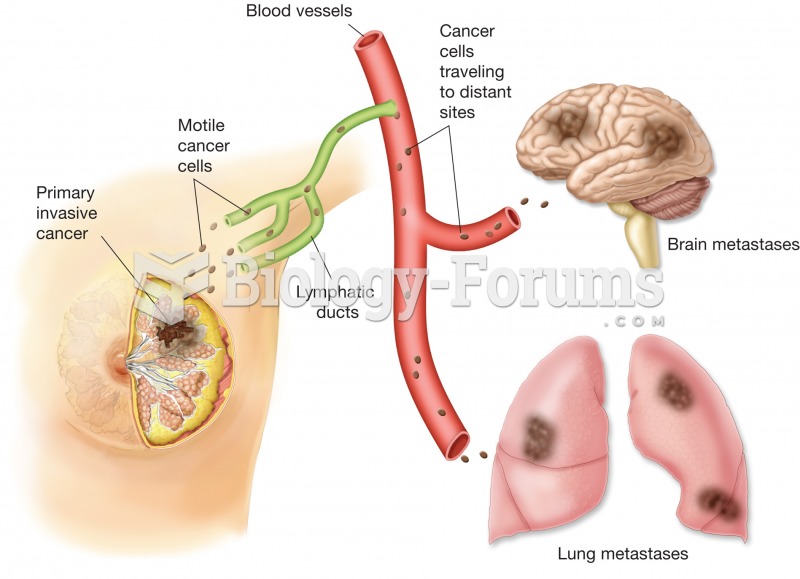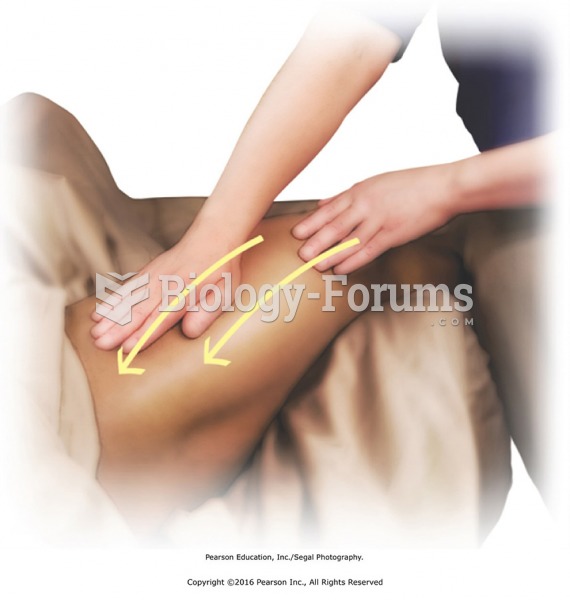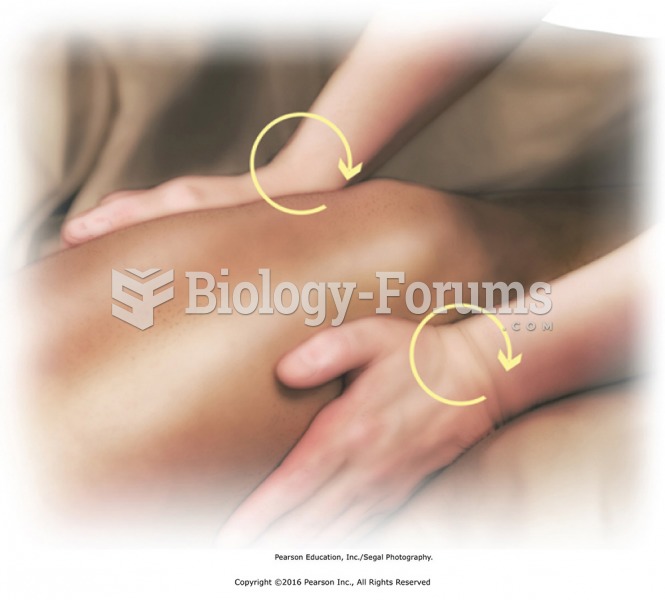|
|
|
In ancient Rome, many of the richer people in the population had lead-induced gout. The reason for this is unclear. Lead poisoning has also been linked to madness.
Walt Disney helped combat malaria by making an animated film in 1943 called The Winged Scourge. This short film starred the seven dwarfs and taught children that mosquitos transmit malaria, which is a very bad disease. It advocated the killing of mosquitos to stop the disease.
Thyroid conditions cause a higher risk of fibromyalgia and chronic fatigue syndrome.
The heart is located in the center of the chest, with part of it tipped slightly so that it taps against the left side of the chest.
Most women experience menopause in their 50s. However, in 1994, an Italian woman gave birth to a baby boy when she was 61 years old.
 Illustration showing how the primary breast tumor metastasized through the lymphatic and blood vesse
Illustration showing how the primary breast tumor metastasized through the lymphatic and blood vesse
 This PCM on a Chrysler vehicle can only be seen by hoisting the vehicle because it is located next ...
This PCM on a Chrysler vehicle can only be seen by hoisting the vehicle because it is located next ...





